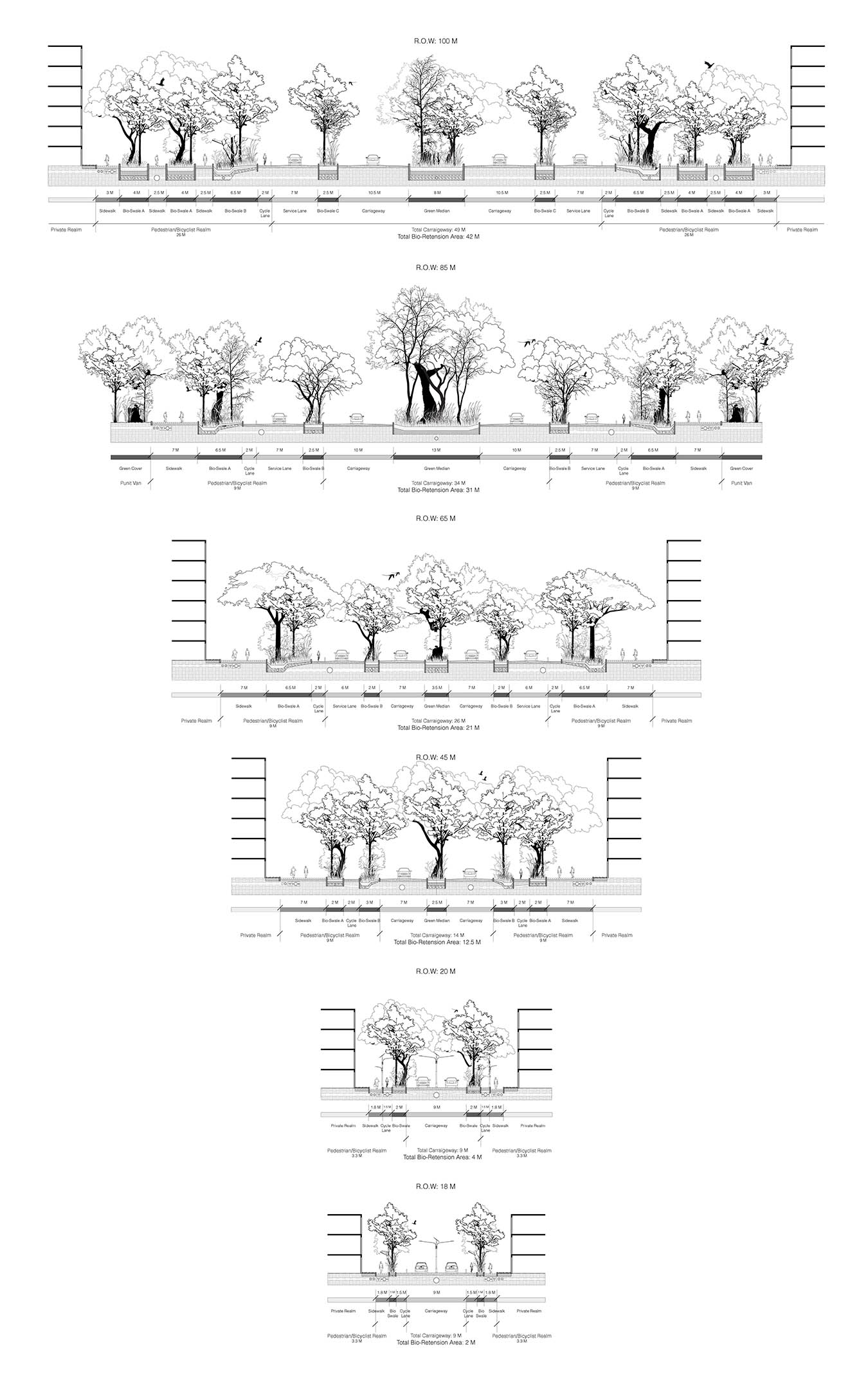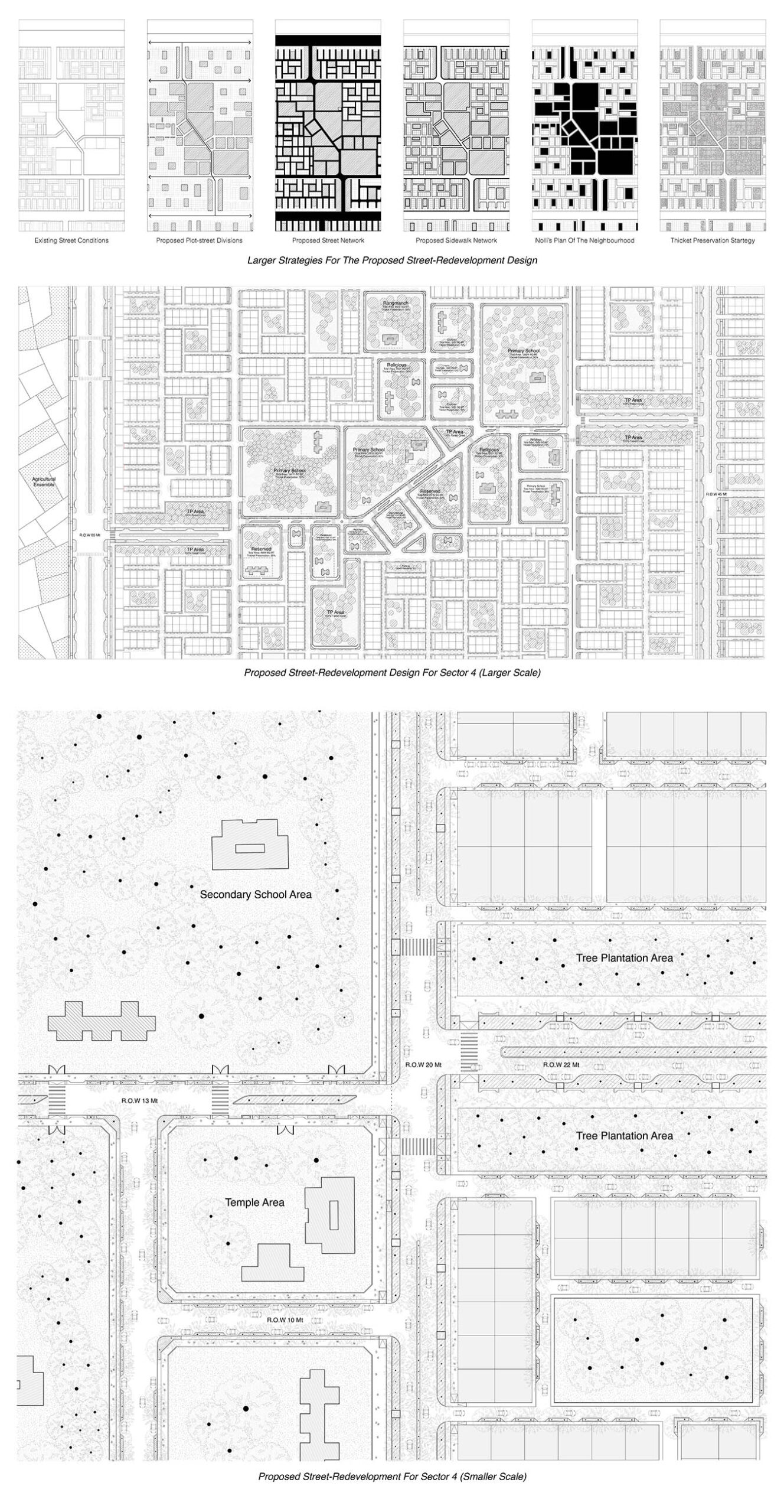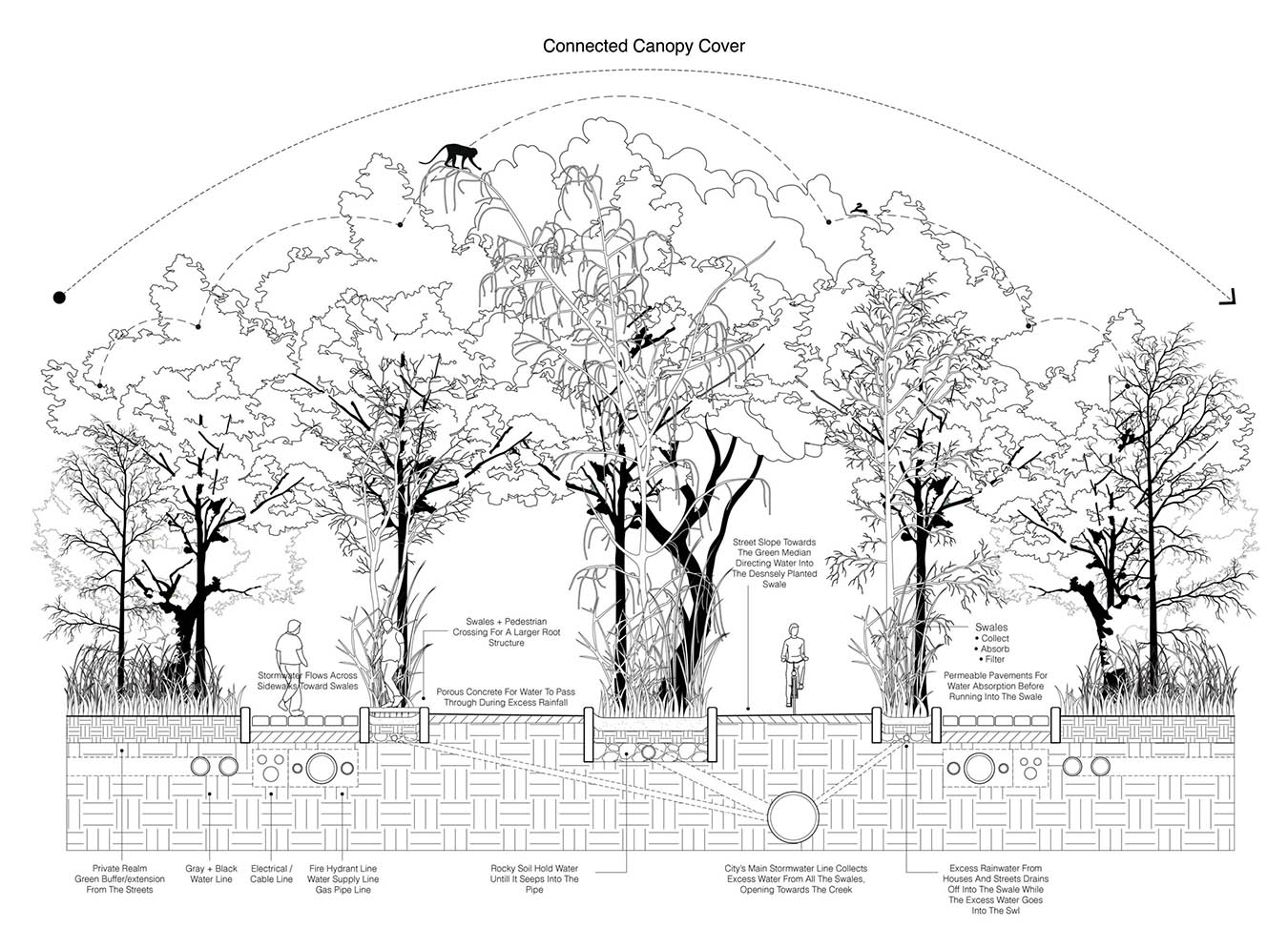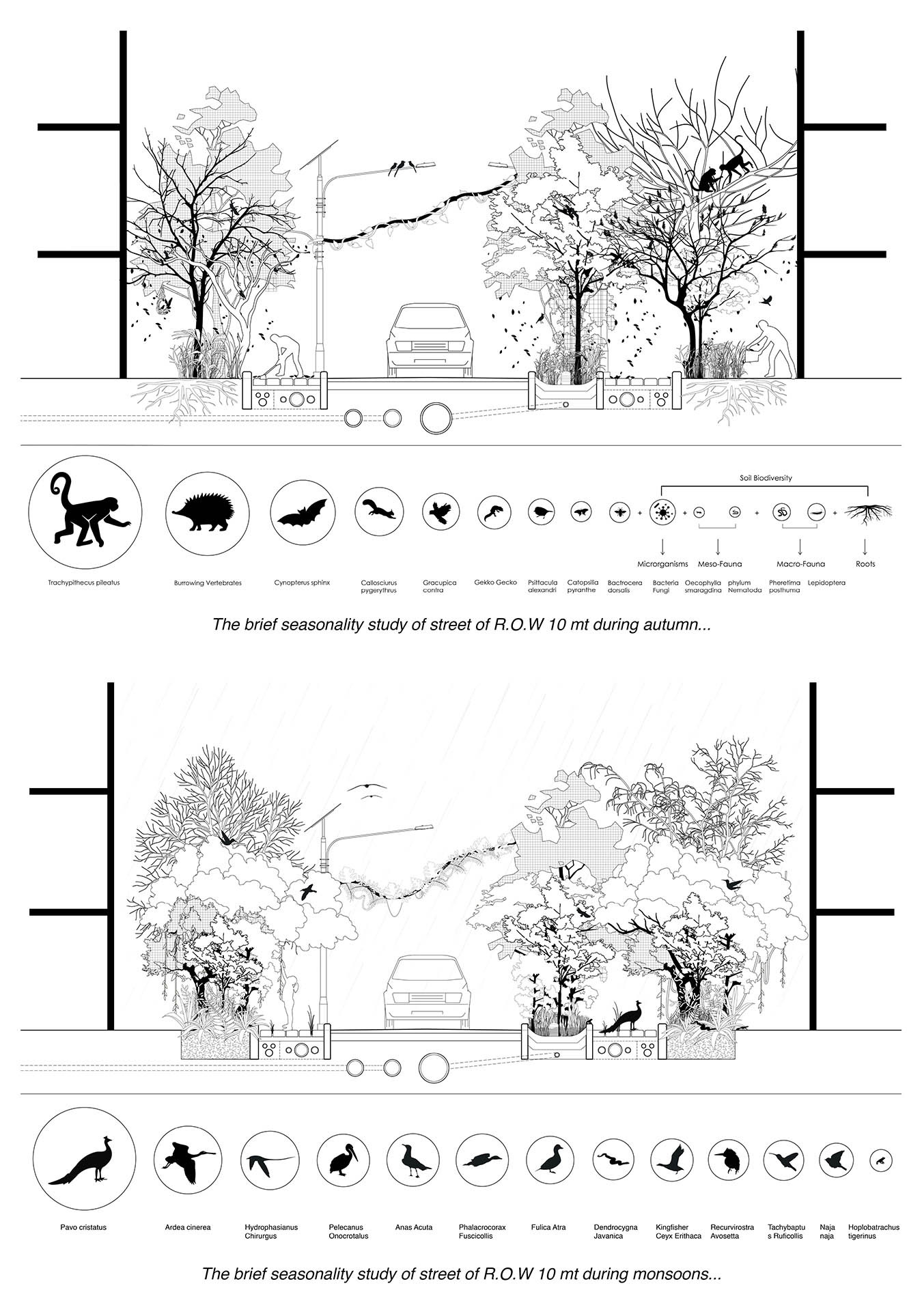Eco Warriors 2022
Bio-Corridors: Linking Habitats For Productive And Ecological Connectivity
-
Tags
Urban Design, Landscape design, Gandhinagar, Street design, Biodiverse corridors, CEPT Portfolio, CEPT
by Shaurya Singh
The project redesigns the inner street networks to connect disparate ecological and productive ensembles into continuous biodiverse corridors. Gandhinagar has approximately 40% under green cover. The study attempts to club these lands under different ensembles such as Forest, Park, Planned, Agricultural, and Wilderness. Mapping revealed they are fragmented and sparsely distributed. The project thus redesigns street networks to connect disparate ecological and productive ensembles into continuous biodiverse corridor systems.





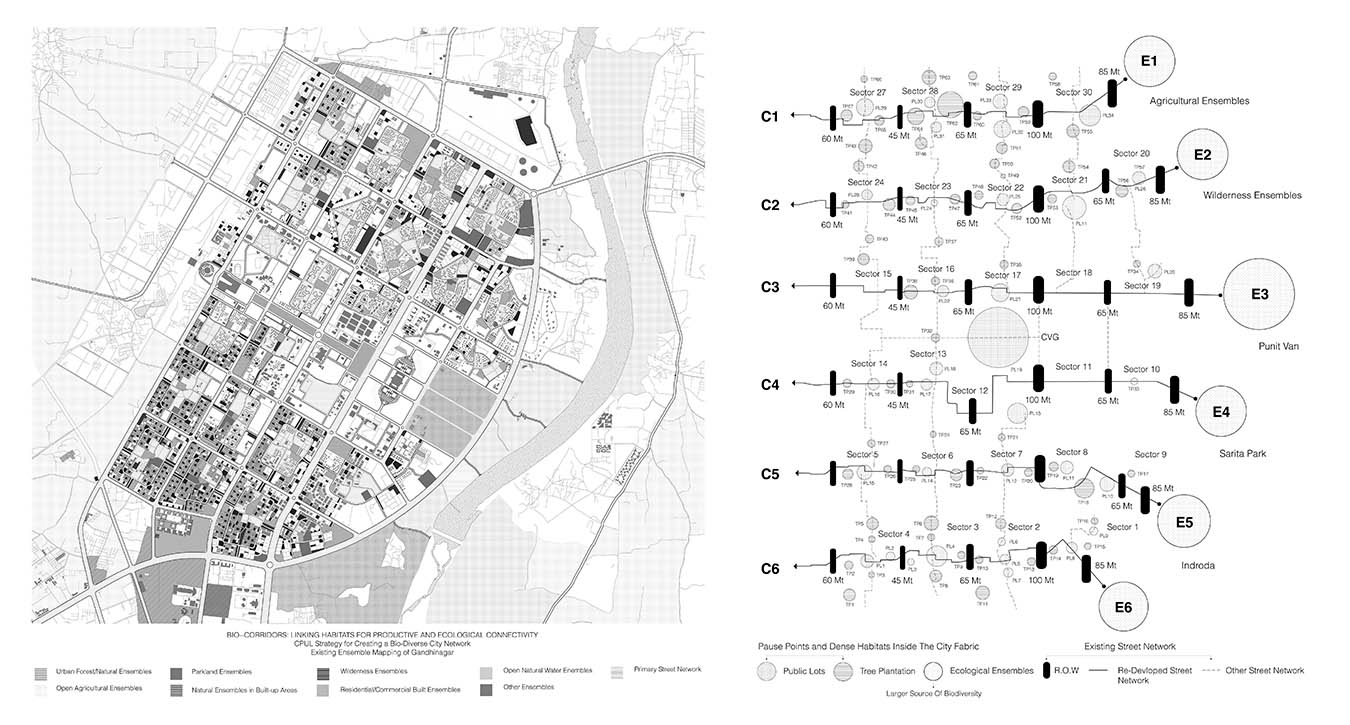
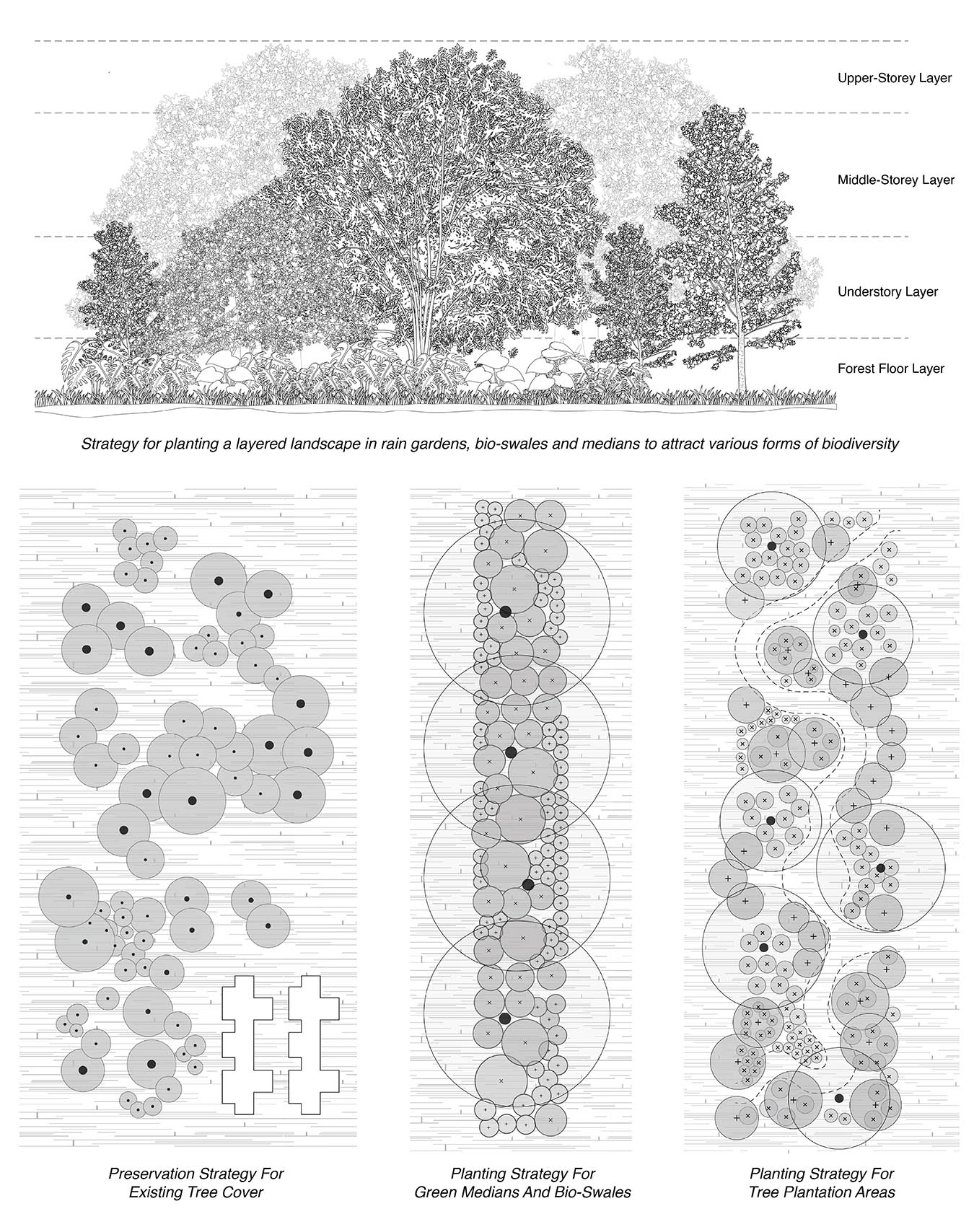 The layers of landscape evident from Gandhinagar are an integral strategy for the green filament. All species of this layered landscape will heavily contribute to hosting and sustaining various forms of life on streets and in the proposed bio-diverse pockets.
The layers of landscape evident from Gandhinagar are an integral strategy for the green filament. All species of this layered landscape will heavily contribute to hosting and sustaining various forms of life on streets and in the proposed bio-diverse pockets. 